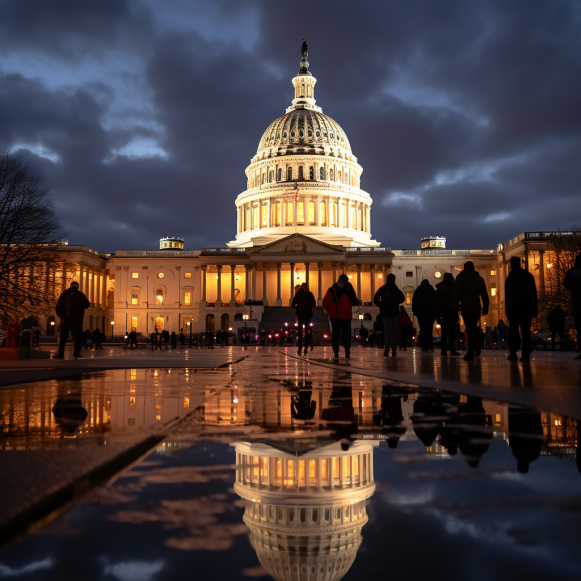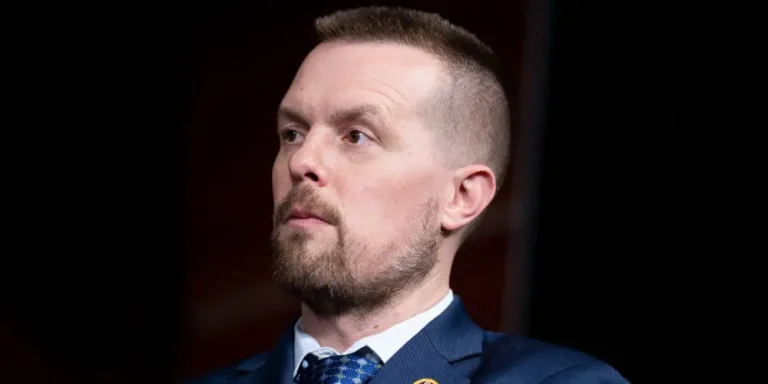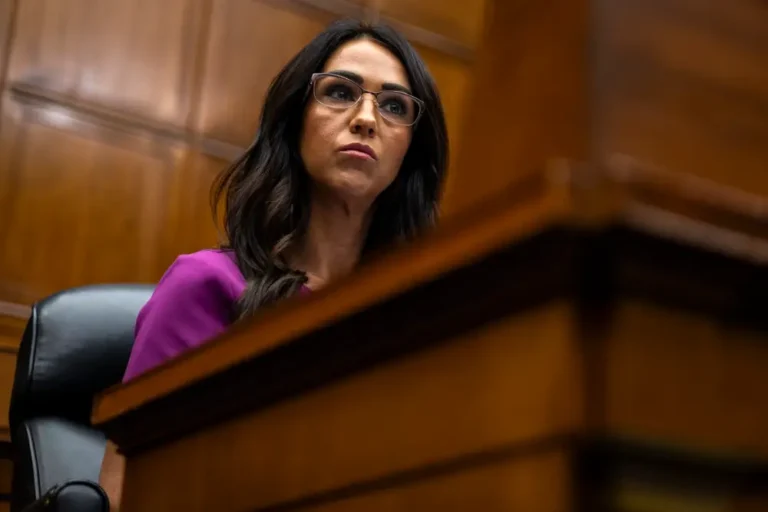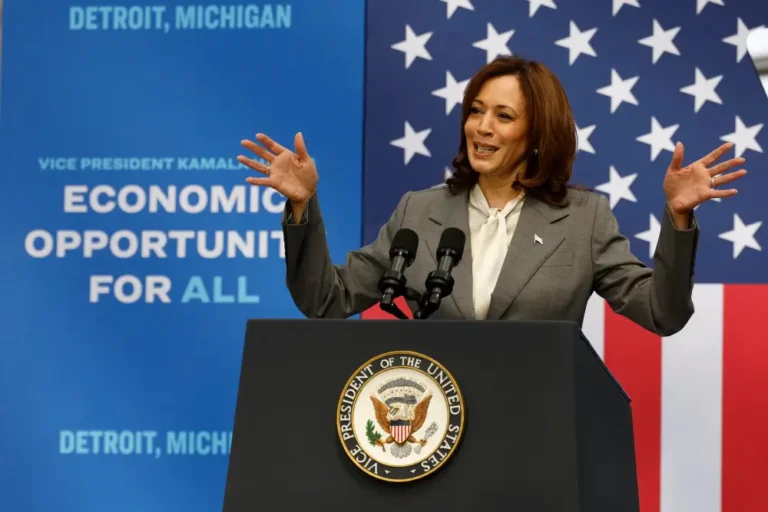Inside the media circus that still surrounds America’s presidential debates

Trump made a rare visit to the spin room after the presidential debate on Tuesday.
Tuesday’s presidential debate was still more than 90 minutes away when I noticed a swelling gaggle, the first I’d seen since arriving at Pennsylvania Convention Center that afternoon. It wasn’t immediately clear who sat in the eye of this hurricane of 40-odd reporters and a half-dozen TV cameras. Still carrying the chicken sandwich I’d picked up for dinner, I squeezed my way forward. It was Gov. Doug Burgum.
The mild-mannered North Dakotan, an also-ran in this year’s GOP primaries and a finalist to be former President Donald Trump’s running mate, had been reduced by the circumstances of the evening to something far less than a two-term governor and successful businessman: An amateur political pundit. The price, perhaps, of keeping oneself in the mix for a Cabinet job.
Burgum, of course, played his part. Vice President Kamala Harris, he said, was a “dangerously progressive liberal from California.” Burgum wanted to know if she would be “asked the tough questions about her positions.” It’s not just Trump who’s liable to come across as pugnacious, Burgum told reporters, noting that Harris is a former prosecutor. “Either one of them could be viewed as being too aggressive,” he reassured the crowd. I quickly got bored and elbowed my way back out of the miniature media mosh pit.

Burgum taking questions ahead of the debate.
This is what it’s really like to be in the “spin room,” the anachronistic institution that — aside from 2020, for obvious, COVID-related reasons — has existed as a parasitic outgrowth of America’s quadrennial presidential debates since Ronald Reagan’s 1984 reelection campaign. Each campaign trots out a variety of surrogates, the bulk of which are high-profile governors and members of Congress, to proffer talking points to reporters before and after the debate.
It’s a cheap production as far as political theatre goes, despite the considerable resources invested by both campaigns and media organizations.

Reporters in the cavernous “spin room” at the Pennsylvania Convention Center.
Tuesday night’s debate, though also an instance of political theatre, was highly consequential. It was Harris and Trump’s only scheduled face-off, though the vice president has since asked for another. But the spin room wasn’t anywhere near the debate hall at the National Constitution Center. In fact, we were six blocks away.
The media center, set in a cavernous convention center hall the size of a football field, could have been anywhere. Six giant projector screens displayed ABC News’ debate stream, while dozens of rows of tables and chairs held the roughly 1,000 reporters who had shown up for the ritual. Along the edges of the room, TV anchors and correspondents illuminated by ring lights spoke into their cameras. Crowds of reporters followed surrogates like Robert F. Kennedy Jr. and Gov. Josh Shapiro around the room like schools of fish. If the goal is to cover the debate in real time, you’re better off staying at home. The room was over-air conditioned and prone to echoes. I couldn’t connect to the complimentary Wifi. The “swag” was fine — a tote bag, a key chain, and a water bottle.
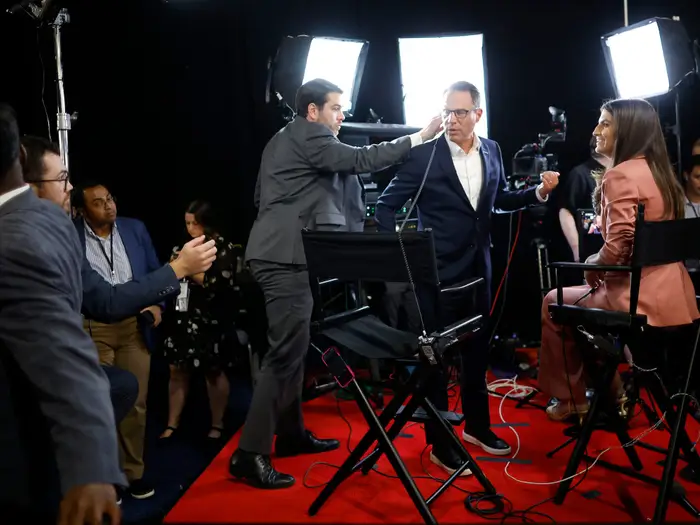
Shapiro finishing an interview with CNN in the spin room.
More importantly, it’s probably the only scenario in which you could place six governors, nine senators, roughly a dozen House members, and a host of other political celebrities before hundreds of reporters in the same room, and still somehow manage to generate almost no newsworthy information.
That’s largely because, as media critics have strenuously argued for decades, it’s an environment where candor and honesty are in short supply. There’s a message to deliver, there’s a victory to declare, and the events of the debate itself often have a strikingly limited bearing on what any surrogate says. Before the onset of Twitter (now known as X), one could still argue that that the spin room played an important role within our conflict-driven media ecosystem: In such an environment, it’s crucial to get each campaign’s perspective, and there’s no better way to do that than putting everyone in one place.
But these days, there’s a zombie-like quality to it. You’re here because everyone else is here, and this is how we’ve run debates since 1984. We’re going through the motions. If you’re a reporter looking to “get the perspective” of a campaign, just check your email inbox. Over the course of Tuesday’s debate, I received 16 “fact check” emails from the Trump campaign, eight such emails from the Harris campaign, and dozens more from members of Congress and downballot candidates congratulating Harris and Trump on their respective “wins.”
“I mean, it’s a media construct,” Rep. Robert Garcia told me ahead of the debate. Don’t blame me for participating in the game you all have set up, in other words. This was the media-friendly California Democrat’s second time spinning for the top of the ticket this year. In June, he was part of the team that was forced to explain away President Joe Biden’s debate performance, indisputably the worst in American history. Tonight, his job would undoubtedly be easier, but I wondered: Was he prepared to declare Harris the victor, no matter what happened? “What I’m going to say is the truth, which is that she’s going to perform great tonight, because she always does,” Garcia said. “I have like, zero doubt.”
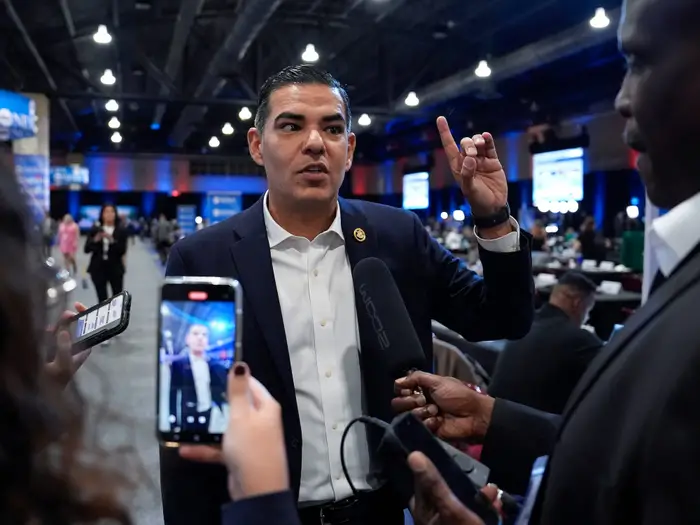
Rep. Robert Garcia in the spin room.
Few reporters are dense enough to outright ask surrogates “who won the debate” or “who’s going to win the debate.” And most of us understand that the spin room is a manifestation of the unholy mixture of news and entertainment that’s often inescapable as a national reporter. Surrogate interviews are largely built around the spinning of particular moments or themes from the debate. Did Trump come across as too frustrated and angry? “Well, the American people are frustrated and angry,” Rep. Matt Gaetz of Florida explained. Did Trump too easily take Harris’ bait? “He did some things that were a little unconventional, but I think that’s what makes Donald Trump such a compelling figure,” Vivek Ramaswamy explained. The only notable point of candor to emerge from Tuesday night was from Sen. Lindsey Graham of South Carolina, who reportedly called for the firing of Trump’s debate team and described the affair as a “missed opportunity.”
That’s not to say it isn’t a fun time for those involved. It became clear to me after a while that that’s why we’re all still here, despite the aforementioned vacuousness and obsolescence of it all. If you care what Anthony Scaramucci has to say about anything, as the Harris campaign apparently thinks you might, then he’s on hand. Remember Khizr Khan, the Gold Star father from the Democratic convention eight years ago? Here’s there too. And where else can one use the urinal beside a 2024 GOP presidential candidate, as I unwittingly did with Ramaswamy?
The set-up also laid bare the power imbalance between Republican politicians and right-wing media. As Trump spoke with Fox News’ Sean Hannity, Sens. Lindsey Graham and Tim Scott of South Carolina, along with Ramaswamy, stood patiently off to the side, waiting their turn to hit the airwaves.
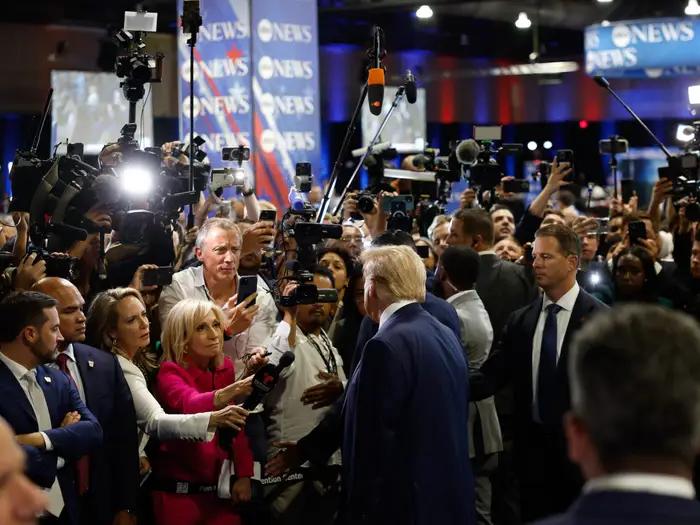
Trump speaking to reporters in the spin room.
Ultimately, the most “newsworthy” thing that took place in the spin room was Trump’s surprise arrival, which triggered something of a stampede of reporters toward the cordoned-off bubble erected around him. Conventional wisdom would tell you that his decision to show up is a sign that he lost the debate — why bother to spin if you won?
But even the former president, larger-than-life as he is, was often drowned out by the overlapping screams of the hundreds of reporters hoping to get his attention, and the only noteworthy tidbit he offered was a noncommittal answer on whether he would agree to another debate.
“They want a second debate because they lost,” he told reporters before claiming the moderators were working against him. “It was obviously three on one.”

